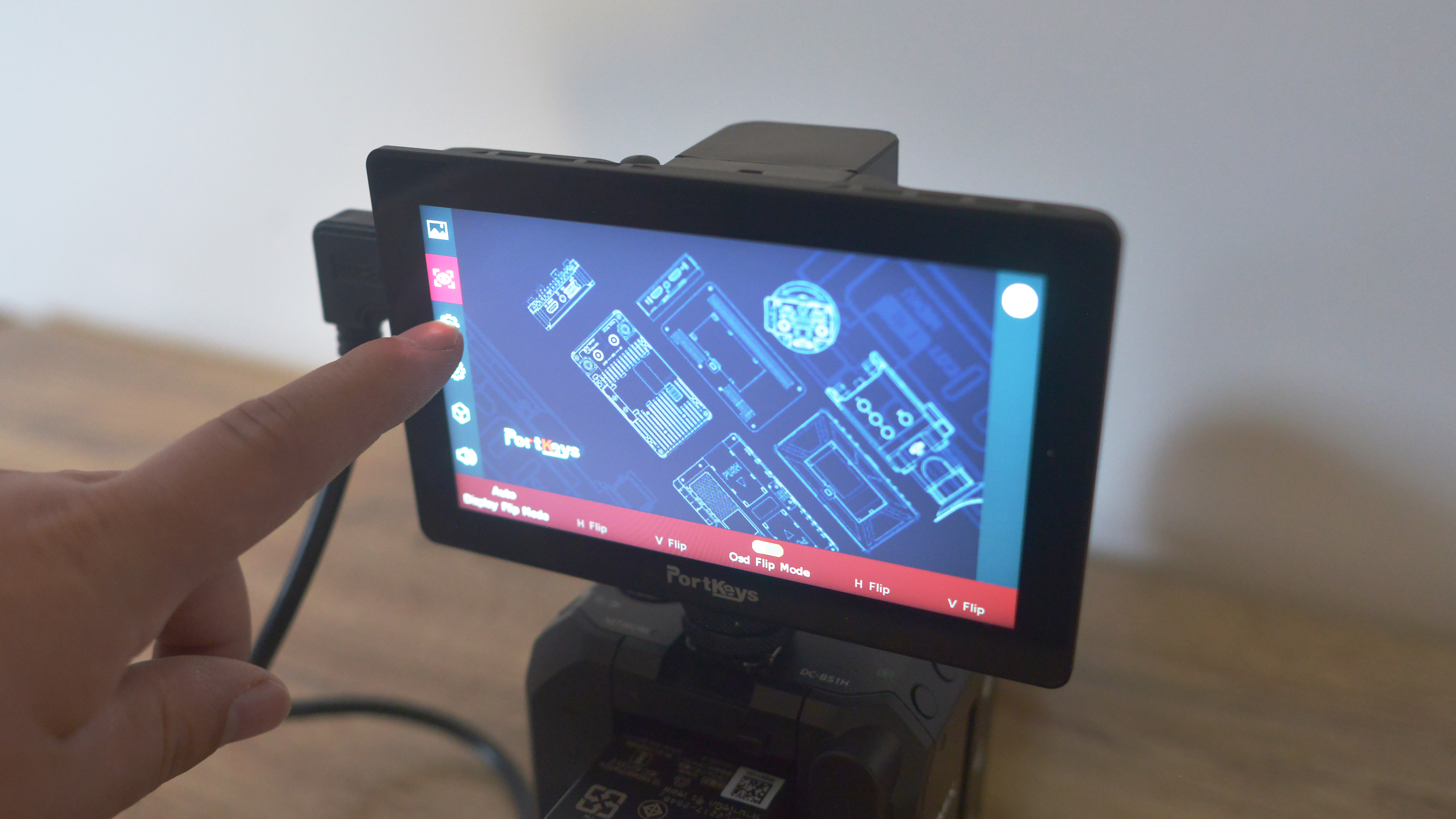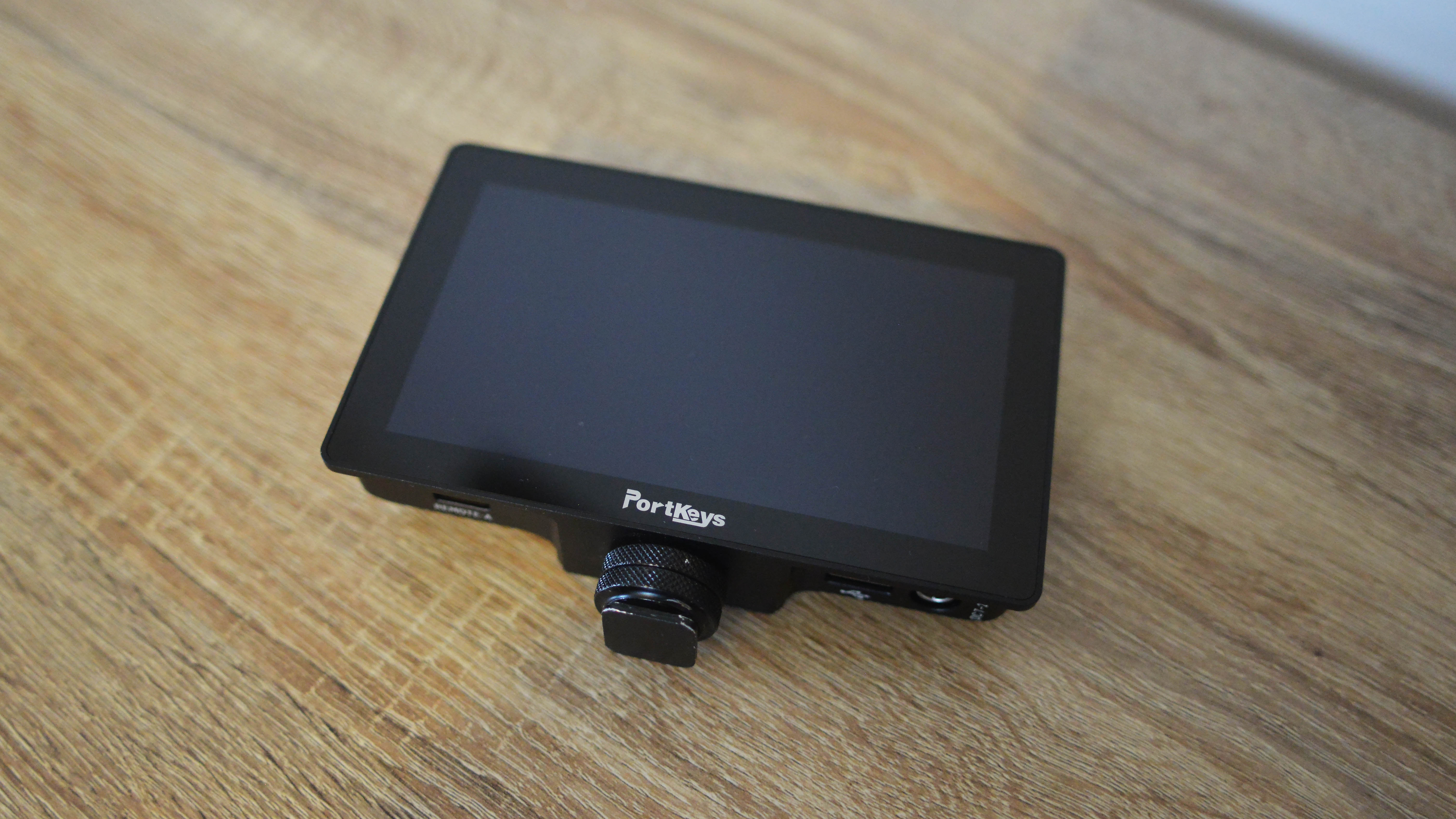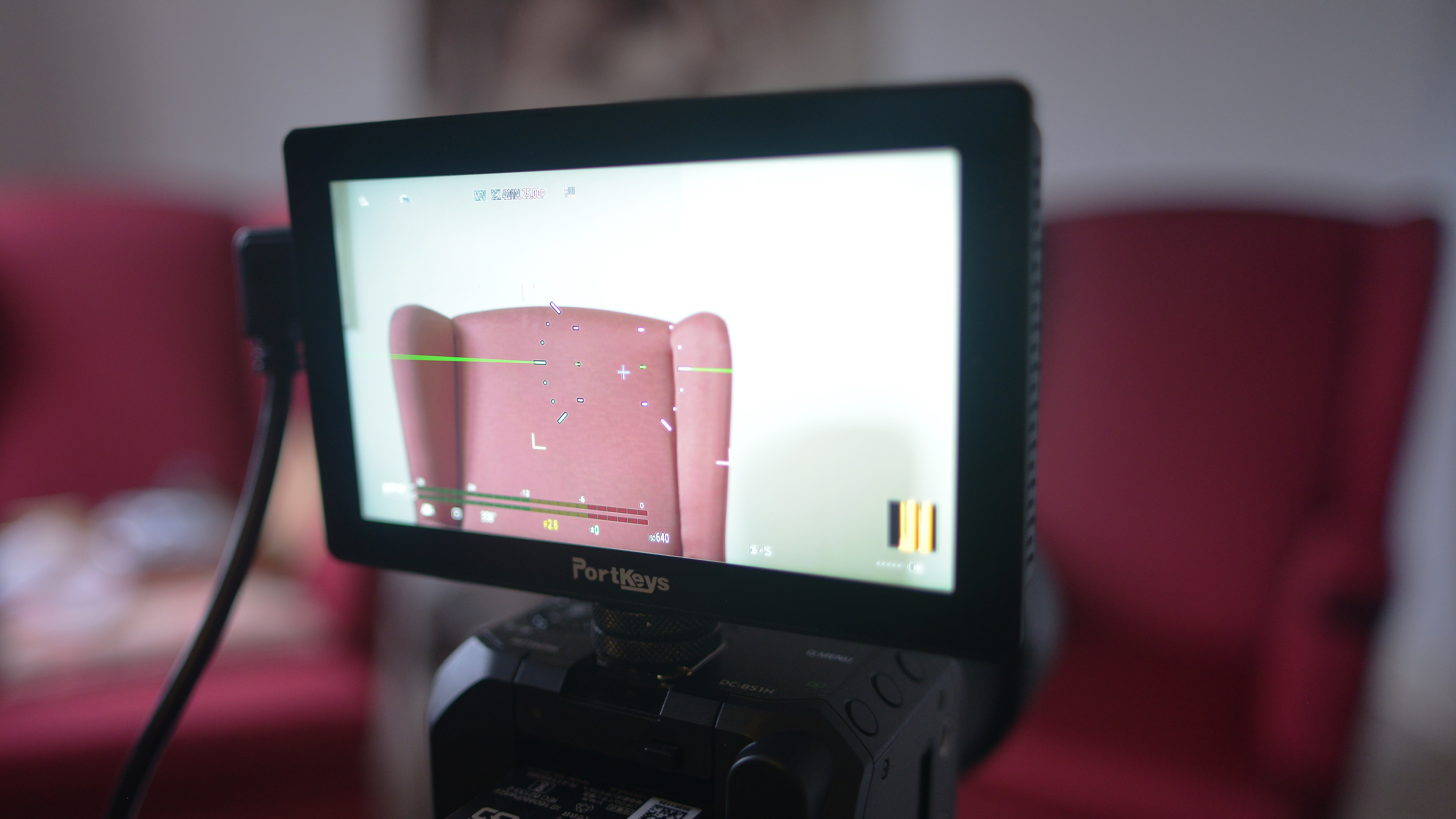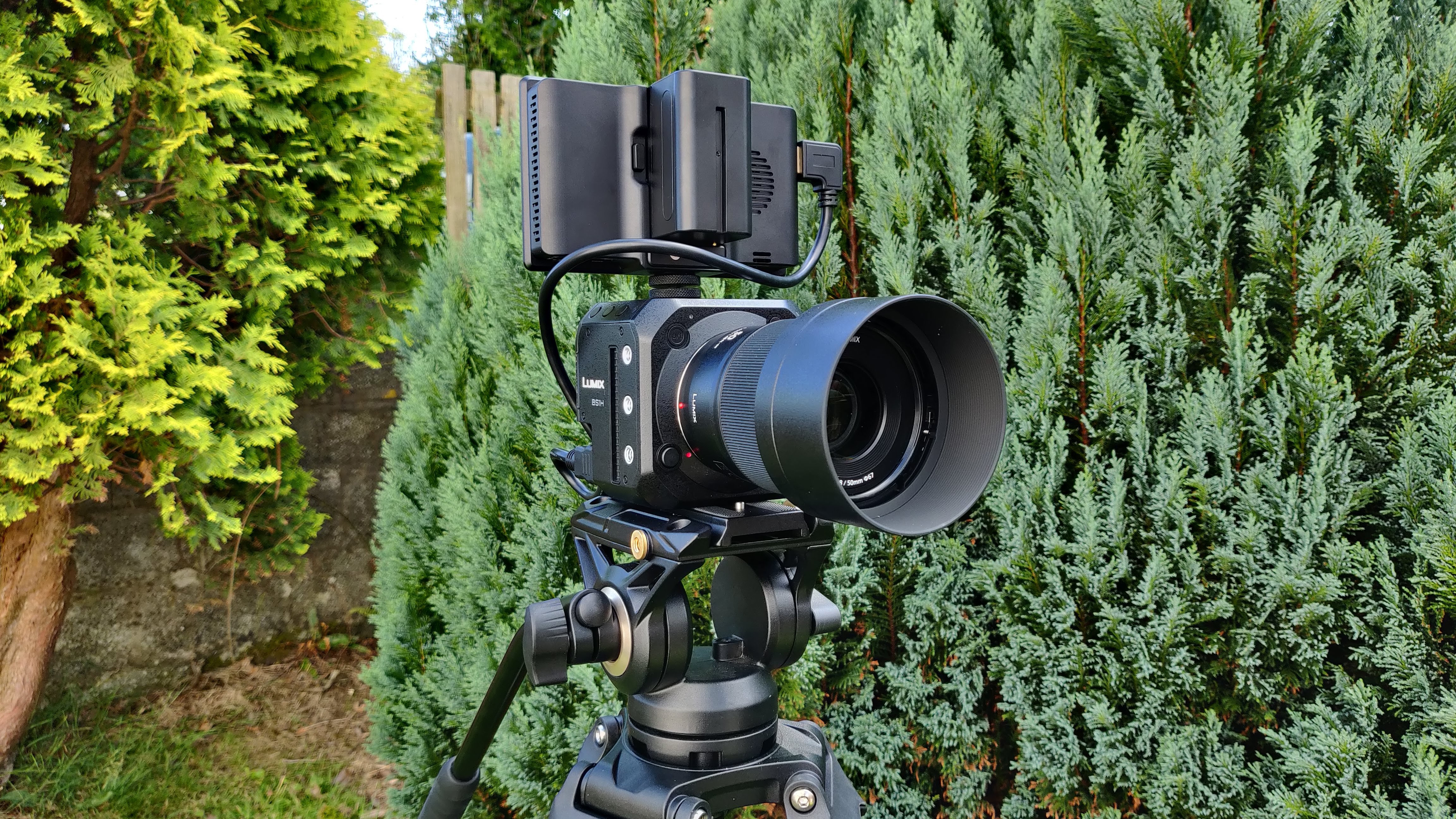Digital Camera World Verdict
The PortKeys LH5P II certainly makes for a great on-camera monitor for either mirrorless or professional cinema cameras. Packed full of industry standard features means your investment in this product will serve you well throughout your filmmaking career, with the need to upgrade being for a bigger size monitor, rather than gaining extra specs. For the price, you are getting a great package that is built to withstand the vigorous day-to-day life of a filmmaker while on set, in the studio or for on the go shooting. Paired with a tough travel case for ease of transport between shoots, great monitor features and the ability for on-board audio monitoring, the PortKeys LH5P II is a great 5.5-inch monitor for anyone looking to up their game in the cinematography world.
Pros
- +
Strongly built
- +
Great display
- +
Packed feature set for professionals
Cons
- -
No HDMI cable included
- -
Only takes Sony NPF style batteries
Why you can trust Digital Camera World
Having a good on-camera monitor is quite frankly the best kit investment any filmmaker should consider when wanting to start out or progress their filmmaking career, Monitors are usually bigger and brighter than the standard monitor see on your mirrorless cameras, which makes composition and framing much easier, let alone all the other parameters you'd want to check.
Most professional cinema cameras don’t feature a screen at all, so it is essential to pick one that suits your needs and overall makes it easier to compose your shots, gain crucial focus and above all allows you to do your job quicker. The PortKeys LHP5 II takes all these must-have qualities and even expands on them, depending on which camera system you're using. Let's find out how well this 5.5” monitor performs.
PortKeys LH5P II Specifications
LCD: 5.5"
Resolution: 1920 x 1080
Aspect ratio: 16:9
Viewing angle: 178°
Brightness: 2200 cd/m2
Contrast ratio: 1000:1
Bit depth: 10-Bit (1.07 Billion Colors)
Color gamut: 100% Rec. 709, 85% DCI-P3
Image controls: Anamorphic De-Squeeze, Check Field, Color Temperature Selection, Customizable Aspect Ratios, False Color, Focus Assist, Focus Peaking, H/V Delay, Histogram, Image Flip, Screen Markers, Waveform, Zebra
Connectivity: HDMI input, HDMI output, 3.5mm headphone output, Proprietary (24 VDC) Input/Output, Mini-USB, USA Type-A input
Battery: Sony NFP style
Dimensions (WxHxD): 144 x 90 x 30.88 mm
Weight: 8.8 oz / 250 g
PortKeys LH5P II Key features
The PortKeys LH5P II is a bright 5.5” monitor that supports a 1920 x 1080 touchscreen to make is incredibly user-friendly, it also features built-in control for Sony Alpha and FS/FX cameras, control for Canon C line-up and R5 and R6, as well as supporting the range of Blackmagic cinema cameras, Z cam and finally Panasonic Lumix models such as the GH and S series. Meaning no matter what camera you are shooting you will be able to have full menu control at your fingertips, which is incredibly intuitive and refreshing from a well priced product.
The PortKeys LHP5 II is very well equipped with many features and connections that would make even the most serious filmmaker’s job easier throughout a shoot. It supports HDMI in and HDMI out via passthrough and can take and display a signal of DCI 4K at 24fps.
You have a built-in 3.5mm headphone for audio monitoring on the fly, as well as remote options and DC inputs. A great feature is that this wonderful monitor supports the widely available Sony NPF style batteries which come in multiple power options, I use some 5600mAh / 40.3Wh NP-F750 batteries that I had in a draw and they are able to power the LH5P II for a very long period of time, in fact I have only had to charge them once and I have used the monitor on multiple shoots outputting 1080p or 4K singles.
PortKeys LH5P II Build & handling
The LH5P II is built line a tank, constructed of aluminium hard-shell with robust hard plastic buttons for menus controls and 4 function setting, it makes it feel like a quality product right out the box, and even the packaging is useful as the PortKey supply you with a handy pelican-style hard case to put your newly required monitor into when travelling, which I thought was a very nice touch.
The best camera deals, reviews, product advice, and unmissable photography news, direct to your inbox!
The LH5P II is equipped with a lot of software built-in, you are able to adjust picture color, temperature, layout and more to have it display a single just the way you want it, you can also flip the image on the horizontal or vertical axis making this a perfect companion for those for are shooting vertical video for social media. You can also set the display gamut to an option of your choice from bypass, Rec.709, P3-DCI, or P3-D65. You also have the option to upload your own LUT to the monitor so you can see exactly how your video is going to look before applying it in the editing studio, which is a massive time saver when on set.
Assist settings include focus assist in the form of zebra, peaking or waveform so you can be sure you will hit critical focus every time with your preferred option of choice. You also have option for RGB waveform or a histogram if you are coming from a photography background, all in all the PortKeys LH5P II really packs a wealth of features in such a robust and sleek form factor that any filmmaker would be proud to use.
PortKeys LH5P II Perfromace
On test I tried this monitor out with the Panasonic Lumix BS1H and on my older Nikon D800, it performed flawlessly on both setups, whether shooting indoor or outside. I found that the 2200 cd/m brightness cut out glare whilst shooting in bright sunlight and did not distract from being able to compose various scenes.
As previously mentioned the LH5P II takes NPF style batteries and found that I could easily use 1 battery for a whole shoot day with the monitor being turned on and off during breaks. Your own mileage may vary, and if you are using bigger professional equipment you might want to invest in a dummy NPF battery to a D-Tap on either your Gold or V-mount battery for longer running hours, but if you are a Mirrorless user the NPF batteries are the way to go, yes it means carrying two different batteries but two will certainly get you through the most depending of shoots with plenty of juice to spare
PortKeys LH5P II Verdict
With the built-in camera control for various Canon, Sony, Panasonic, Blackmagic, and even Z Cam cinema cameras, this is a great option for anyone wanting a monitor that will help a filmmaker get the shot and be a very helpful visual aid in the composition process.
For the reasonable price you get a great package that is built to withstand the vigorous day-to-day life of a filmmaker while on set, in the studio or for on the go shooting. Paired with a tough travel case for ease of transport between shoots, great monitor features and the ability for on-board audio monitoring, the PortKeys LH5P II is a great 5.5” monitor for anyone looking to up their game in the cinematography world.
You might also like to look at the best Netflix-approved cameras or the best cameras for filmmaking, alongside the best cine lenses to complete your setup.

For nearly two decades Sebastian's work has been published internationally. Originally specializing in Equestrianism, his visuals have been used by the leading names in the equestrian industry such as The Fédération Equestre Internationale (FEI), The Jockey Club, Horse & Hound, and many more for various advertising campaigns, books, and pre/post-event highlights.
He is a Fellow of the Royal Society of Arts, holds a Foundation Degree in Equitation Science, and holds a Master of Arts in Publishing. He is a member of Nikon NPS and has been a Nikon user since his film days using a Nikon F5. He saw the digital transition with Nikon's D series cameras and is still, to this day, the youngest member to be elected into BEWA, the British Equestrian Writers' Association.
He is familiar with and shows great interest in 35mm, medium, and large-format photography, using products by Leica, Phase One, Hasselblad, Alpa, and Sinar. Sebastian has also used many cinema cameras from Sony, RED, ARRI, and everything in between. He now spends his spare time using his trusted Leica M-E or Leica M2, shooting Street/Documentary photography as he sees it, usually in Black and White.






